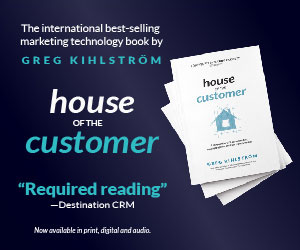Marketing Technology, or MarTech, has revolutionized the way businesses interact with their customers through campaigns and content delivery. As technology continues to evolve, it is important for marketers to stay up-to-date on MarTech options that can augment their marketing efforts. MarTech can be divided into four main categories: customer information, content & campaign delivery, measurement & reporting, and workflow & automation. In this article, we will explain each of these categories of MarTech platforms in detail and provide examples of how they can improve your marketing efforts.
Customer Information
Customer Information is essential for businesses to gain a deeper understanding of their consumers. It provides valuable insight into customer behavior, preferences, and needs essential for effective marketing. Customer information platforms such as CRM (Customer Relationship Management) software allow businesses to manage customer data to personalize their marketing efforts. CDPs (Customer Data Platforms) are another example of a customer information platform that can be used to track customer data from a variety of sources. By analyzing the data collected, businesses can curate campaigns that will satisfy their customer’s preferences, making them feel seen and heard, resulting in increased brand loyalty and lead generation.
Content & Campaign Delivery
Content and Campaign Delivery concerns the distribution of marketing campaigns and content to specific target audiences through various channels. This category encompasses several platforms, such as email marketing and social media management systems that enable marketers to create targeted customer journeys. Email marketing platforms such as Pardot or Marketo allow businesses to design email campaigns that can be segmented based on customer preferences, location and demographics. Social media management platforms such as Sprout Social and Hootsuite enable marketers to schedule and track social media campaigns more efficiently, ensuring that the brand’s message is consistent across multiple social media platforms. This category would also include your Digital Experience Platform (DXP), such as Adobe Experience Manager, Optimizely, or Sitecore, that runs your website.
Measurement & Reporting
The next category or MarTech platforms relates to analytics. Measurement & Reporting refers to platforms that provide businesses with metrics to determine if their marketing campaigns are effective. These platforms provide insight into metrics like engagement rates, conversions and clicks, allowing the marketer to make data-driven decisions to optimize their campaigns. Google or Adobe Analytics are widely used platforms that obtain data about website traffic and engagement rates while marketing automation platforms. It is essential to leverage data-driven insights from these platforms to optimize campaigns constantly, resulting in more conversions and ROI.
Workflow & Automation
Workflow & Automation creates efficiency for businesses by automating repetitive tasks. Workflow tools such as Jira, Workfront, Asana, and Trello provide a centralized platform for teams to collaborate on marketing projects, assign tasks, track progress, and communicate efficiently to achieve shared goals. Automation tools like Zapier can connect various software, creating shortcuts for marketers to execute repetitive tasks, such as sending appointment reminders, thank you notes, and follow-up emails, ultimately saving valuable time for higher-level marketing strategy development.
To remain competitive, businesses must embrace MarTech to augment their marketing efforts continually, and looking at your MarTech stack in this way can help you identify areas of strength as well as areas of weakness. By implementing a comprehensive MarTech strategy, businesses can access a deeper understanding of their target audience, create targeted campaigns, and optimize marketing efforts to achieve a higher ROI. Incorporating MarTech platforms may seem daunting at first, but the benefits of efficient workflow, accurate targeting, and data-driven decision-making make the effort worthwhile.
Original Source:
Blog – GK5A – Agile Business Transformation
Original URL:










